Key Takeaways
- Modern cover letters in 2025 must balance ATS compatibility with personalized, data-driven storytelling to boost interview success rates.
- Strategic use of AI enhances editing precision, tone consistency, and clarity without compromising authenticity or originality.
- Quantifying achievements with measurable results strengthens credibility and maximizes the cover letter’s conversion impact.
In 2025, the art and science of crafting a powerful cover letter have evolved into a strategic discipline that blends technology, psychology, and storytelling. As the job market becomes increasingly competitive and digitally filtered, the traditional cover letter is no longer just a formality—it has become a sophisticated instrument of persuasion that determines whether a candidate’s application advances past automated screening systems and into the hands of a human recruiter. The modern cover letter is not merely a written introduction; it is a data-informed, algorithm-optimized, and human-centered communication tool designed to convert interest into interviews with precision.

The evolution of recruitment technology, particularly the widespread integration of Applicant Tracking Systems (ATS) and Artificial Intelligence (AI), has fundamentally transformed the way employers assess and shortlist candidates. Nearly 90% of companies, including almost every Fortune 500 organization, now rely on ATS platforms to manage and evaluate applications. These systems automatically parse, categorize, and score cover letters and resumes based on keyword alignment, structure, and contextual relevance. As a result, a candidate’s ability to write a technically optimized cover letter directly impacts whether their application is even seen by a recruiter. In this new landscape, strategic keyword integration and flawless formatting have become as essential as professional storytelling and personal branding.
However, navigating this complex digital ecosystem is only half the challenge. The rise of AI-driven writing tools, while empowering job seekers with enhanced efficiency and linguistic sophistication, introduces a parallel concern: authenticity. Recruiters are increasingly adept at identifying formulaic, AI-generated content that lacks genuine human voice and emotional resonance. In 2025, the winning strategy lies in balancing automation with authenticity—using AI as an enhancer rather than a substitute. The most successful applicants are those who leverage AI for structural and linguistic refinement but infuse their letters with personal insights, quantifiable achievements, and a deep understanding of the employer’s mission and culture.
A strategically written cover letter in 2025 must also prioritize measurable impact. Recruiters and hiring managers no longer respond to generic descriptions of experience—they seek tangible proof of performance and value. Quantifying achievements through data-driven storytelling, such as citing percentage increases in revenue, productivity, or engagement, not only demonstrates credibility but also appeals to both algorithmic evaluation and human judgment. Metrics serve as persuasive evidence that transforms claims into verifiable outcomes, giving candidates a decisive edge in the hiring process.
Moreover, the structure and readability of the cover letter remain paramount. With most recruiters spending less than two minutes reviewing each application, clarity and conciseness are vital. The optimal 2025 cover letter typically follows a three-paragraph framework—introducing relevance and enthusiasm, showcasing quantifiable achievements, and demonstrating company-specific alignment. Each sentence must serve a purpose, guiding the reader through a logical, compelling narrative that emphasizes why the candidate is not just qualified but uniquely suited for the role.
This strategic evolution of the cover letter is reinforced by new industry data highlighting its continued influence. Despite assumptions that cover letters are obsolete, recent surveys reveal that over 83% of hiring managers still read them, and 45% do so before reviewing the resume. The cover letter, therefore, functions as a crucial first impression—a personalized pitch that communicates both technical competency and cultural compatibility. Candidates who neglect this element or submit generic, AI-generated templates risk being filtered out in the earliest stages of evaluation.
In the broader context of digital recruitment, the strategic cover letter of 2025 operates at the intersection of human insight and machine logic. It must satisfy algorithmic requirements without sacrificing individuality. It must be polished enough to pass ATS scans yet personalized enough to captivate human readers. By mastering this delicate balance, job seekers position themselves not only as capable professionals but as adaptable, forward-thinking candidates who understand the demands of a technologically advanced hiring landscape.
This guide delves deeply into the essential components of crafting a 2025-ready cover letter—from ATS optimization techniques and AI integration strategies to quantification frameworks and formatting best practices. It provides data-driven insights, practical examples, and actionable recommendations to help candidates achieve one key objective: transforming their cover letter from a procedural requirement into a strategic instrument that maximizes interview conversion rates in a hypercompetitive, AI-driven job market.
Before we venture further into this article, we would like to share who we are and what we do.
About 9cv9
9cv9 is a business tech startup based in Singapore and Asia, with a strong presence all over the world.
With over nine years of startup and business experience, and being highly involved in connecting with thousands of companies and startups, the 9cv9 team has listed some important learning points in this overview of The Strategic Cover Letter in 2025: Navigating ATS, & Leveraging AI.
If you are looking for a job or an internship, click over to use the 9cv9 Job Portal to find your next top job and internship now.
Email [email protected] now for career and job finding services.
Or hope over to 9cv9 Job Placement Services for Professionals to learn how to get hired and find a high-paying job.
The Strategic Cover Letter in 2025: Navigating ATS, & Leveraging AI
- The Modern Mandate: Quantifying the Strategic Value of the Cover Letter in 2025
- Conquering the ATS Gate: Optimization for Machine Screening (The 98% Rule)
- The AI Augmentation Strategy: Efficiency, Ethics, and Authenticity
- The 60-Second Pitch: Structure, Brevity, and Quantifiable Impact
- Execution and Quality Control: Finalizing the Interview Invitation
1. The Modern Mandate: Quantifying the Strategic Value of the Cover Letter in 2025
a. The Data-Driven Necessity: Recruiter Readership and Influence in 2025
The evolving recruitment landscape of 2025 has redefined the traditional cover letter into a data-driven, strategic communication tool that plays a pivotal role in candidate differentiation. As automation, artificial intelligence, and Applicant Tracking Systems (ATS) dominate the hiring process, the cover letter now operates not as a mere formality but as a precision instrument for personal branding and professional storytelling. It bridges the human-technology divide, allowing job seekers to quantify their value, contextualize achievements, and strategically align their expertise with organizational needs.
The Modern Transformation of the Cover Letter
In the age of digital recruitment, where resumes are often filtered by AI before human review, the cover letter has assumed renewed importance. It provides context, narrative, and personality—qualities that no algorithm can fully replicate. Modern recruiters and HR technologies interpret cover letters not simply as communication samples but as behavioral indicators that reveal motivation, adaptability, and cognitive depth.
Key characteristics of the strategic cover letter in 2025 include:
- Data-driven customization: Tailoring narratives based on company insights, job requirements, and ATS keyword mapping.
- Quantified achievements: Presenting measurable impact metrics to demonstrate business outcomes and leadership value.
- AI optimization: Structuring content for dual readability—by both human recruiters and machine algorithms.
- Storytelling precision: Using authentic narratives to establish emotional resonance while maintaining analytical credibility.
Recruiter Readership and Influence in 2025
Despite the widespread adoption of ATS and AI-driven screening platforms, human engagement with cover letters remains remarkably consistent. Contemporary hiring statistics reveal a strong reliance on cover letters for contextual interpretation and qualitative assessment.
Key statistical insights:
| Metric | Percentage | Interpretation |
|---|---|---|
| Hiring managers who view cover letters as essential or influential | 94% | Indicates sustained recruiter reliance on cover letters for qualitative judgment |
| Recruiters who read cover letters before resumes | 45% | Demonstrates that many hiring decisions begin with narrative assessment |
| Mid-sized companies requiring cover letters | 72% | Highlights corporate emphasis on candidate communication and motivation |
| Large companies mandating cover letter submission | 69% | Reflects institutional integration of cover letters in recruitment workflows |
| Hiring managers who read optional cover letters | 73% | Suggests that initiative and effort remain differentiating factors in hiring decisions |
These statistics affirm that the modern cover letter is far from obsolete; instead, it functions as a high-leverage tool that can influence early-stage selection outcomes. Recruiters, especially within technology, consulting, and management industries, interpret a well-crafted cover letter as an early predictor of communication acumen and strategic thinking.
AI and ATS Integration: The Dual Audience Strategy
The 2025 job market demands that cover letters cater to both machine and human readers. Advanced ATS platforms now analyze cover letter content for alignment with job descriptions, sentiment tone, and keyword relevance. Simultaneously, AI-driven writing tools help candidates refine grammar, optimize phrasing, and quantify achievements to meet algorithmic preferences.
The dual optimization approach involves:
- Keyword Strategy Matrix
| ATS Component | Optimization Focus | Candidate Action |
|---|---|---|
| Job Title Matching | Use role-specific keywords | Mirror employer’s language from job posting |
| Skill Recognition | Integrate both hard and soft skills | Highlight measurable outcomes of key skills |
| Sentiment Analysis | Maintain professional and positive tone | Avoid overly generic expressions |
| Quantitative Indicators | Present results-based statements | Include metrics such as revenue growth, cost reduction, or efficiency gains |
By balancing machine readability and human engagement, candidates achieve what recruitment experts term “narrative alignment”—a synergy between algorithmic optimization and authentic storytelling.
Quantifying Value for Interview Conversion
In 2025, the effectiveness of a cover letter is measured by its conversion rate—the ability to turn applications into interviews. This conversion depends largely on how effectively the candidate quantifies their professional value. The most successful applicants apply a data-centric writing style that articulates measurable impact.
Examples of quantifiable framing include:
- Instead of stating “Managed a sales team,” write “Led a cross-regional sales team that increased quarterly revenue by 36%.”
- Replace “Improved process efficiency” with “Implemented workflow automation reducing project turnaround time by 28%.”
Such quantification transforms subjective claims into verifiable indicators of success, reinforcing credibility in both AI scoring models and human judgment.
The Strategic Implication for Candidates
As recruitment becomes increasingly data-driven and AI-assisted, the cover letter stands at the intersection of technology and human perception. It remains the only platform within the job application process where a candidate can articulate intent, motivation, and quantifiable impact in their own voice.
A strategic cover letter in 2025 accomplishes three critical objectives:
- Passes ATS and AI filters through keyword alignment and sentiment calibration.
- Builds human connection through narrative relevance and emotional intelligence.
- Converts applications into interviews through data-backed demonstration of value.
In essence, the modern cover letter has evolved into a hybrid communication instrument—part algorithmic interface, part human narrative. It not only reflects the candidate’s qualifications but also their strategic adaptability within a technologically advanced recruitment ecosystem.
b. Performance Benchmarks: Calculating Your Interview Conversion ROI
In the hyper-competitive employment landscape of 2025, every application is an exercise in precision marketing, where candidates must compete not only against peers but also within the algorithmic logic of Applicant Tracking Systems (ATS) and AI-driven screening platforms. The strategic cover letter has emerged as one of the most influential variables in determining a candidate’s interview conversion rate. It is no longer a supplementary document—it is an evidence-based instrument that quantifies personal brand value and measures return on application effort.
The Economics of Interview Conversion in 2025
Modern recruitment data reveals a staggering competition-to-interview ratio. For a single corporate job posting, approximately 250 applications are received on average. Yet, only about 2–3% of applicants progress to the interview stage. Within this data landscape, the cover letter acts as the decisive multiplier, transforming minimal odds into measurable opportunities.
Key insights from recruitment analytics show:
- The inclusion of a cover letter increases the probability of securing an interview by 3.4 times.
- Customizing and personalizing a cover letter further amplifies this advantage, making candidates 1.9 times more likely to be shortlisted than those using generic submissions.
- Applicants who consistently integrate quantified results, AI-calibrated keyword optimization, and company-specific alignment into their cover letters often achieve a 10% or higher interview conversion rate, compared to the global average of 2–3%.
These findings emphasize that the cover letter serves as the core accelerator of a job seeker’s Return on Effort (ROE). It is not only a qualitative statement of motivation but a measurable indicator of application strategy efficiency.
Interview Conversion ROI Matrix
The following table illustrates how varying levels of cover letter sophistication influence interview conversion outcomes.
Table: Cover Letter Impact on Interview Rate Efficiency
| Application Strategy | Interview Rate Multiplier | Description of Strategic Impact |
|---|---|---|
| Standard Application (No Cover Letter) | 1.0x (Baseline: 2–3%) | Minimal differentiation; relies solely on resume content; limited recruiter engagement. |
| Application with Generic Cover Letter | 3.4x Increase | Demonstrates initiative; often sufficient to surpass algorithmic filters but lacks personalization depth. |
| Application with Tailored Cover Letter | 1.9x Higher Likelihood | Combines data-driven customization, AI keyword alignment, and value quantification; strongest impact on human and algorithmic selection. |
This ROI-based perspective transforms the cover letter from an optional narrative into a data-backed strategic tool. A well-structured, AI-optimized, and tailored letter not only boosts visibility within ATS systems but also significantly improves recruiter perception, signaling initiative and professionalism.
AI-Enhanced Personalization and Predictive Alignment
In 2025, personalization is no longer limited to addressing the recruiter by name—it is a systematized process informed by AI and analytics. Candidates now rely on predictive writing tools that:
- Analyze company culture, tone, and values using language models.
- Suggest tailored phrasing aligned with employer brand communication.
- Score keyword relevance and sentiment tone for ATS optimization.
- Quantify achievements to highlight measurable impact within industry benchmarks.
By merging human authenticity with machine precision, the modern cover letter operates as both a persuasive communication and a predictive alignment document—positioning the candidate not merely as qualified but as contextually and strategically compatible.
Targeting Efficiency and Application Strategy
To maximize conversion, candidates must treat every application as an ROI equation. Research suggests that high-performing applicants maintain an interview-to-application ratio of 1:10, equating to a 10% conversion benchmark. Falling below this threshold typically signals structural inefficiencies—either in the cover letter’s content strategy, resume relevance, or targeting accuracy.
Optimization strategies include:
- Performing periodic audits of application performance metrics.
- Refining cover letter language using ATS simulation tools.
- Analyzing recruiter engagement data from networking or employer feedback loops.
Performance Benchmark Visualization
Chart: Correlation Between Cover Letter Quality and Interview Conversion Rate
| Cover Letter Quality Level | Interview Conversion Rate |
|---|---|
| No Cover Letter | 2–3% |
| Generic Cover Letter | 6–8% |
| Personalized & Data-Driven Cover Letter | 10–14% |
The data demonstrates that personalization, quantification, and AI optimization have direct, measurable impacts on job search outcomes.
Strategic Conclusion
In 2025, the cover letter has evolved from a static communication into a dynamic, data-calibrated strategic asset. It measures professional storytelling against algorithmic readability, emotional resonance against quantifiable results. For candidates who master this hybrid form of communication—balancing AI alignment with genuine narrative clarity—the reward is tangible: exponential improvement in interview conversions, elevated personal brand visibility, and measurable ROI on every submitted application.
c. The Cost of Omission: Quantifying Rejection Rates
In 2025, the recruitment ecosystem operates at the intersection of automation and personalization, where every written word is evaluated by both algorithms and human readers. Within this dynamic, the omission or poor execution of a cover letter carries measurable consequences. Employers, now equipped with advanced Applicant Tracking Systems (ATS) and AI-assisted candidate ranking tools, use the cover letter as a behavioral and cognitive filter—assessing motivation, relevance, and communication clarity. Submitting a weak or generic version no longer represents a neutral action; it directly translates into measurable rejection rates.
The Rejection Economy: Quantifying the Cost of Weak Cover Letters
Recruiters today operate under high application volumes, often reviewing hundreds of candidates for a single role. Amid such saturation, the cover letter serves as a high-speed differentiation mechanism—either propelling a candidate forward or swiftly excluding them from contention.
Data from 2025 recruitment studies reveal:
- 81% of recruiters have rejected candidates based solely on the quality or tone of their cover letter.
- 72% of hiring managers explicitly prioritize customized content, interpreting generic submissions as an indicator of indifference or poor communication ability.
- Automated screening systems and AI writing detectors increasingly flag repetitive, templated, or non-contextualized content, reducing visibility for non-personalized applications.
This data underscores that the cost of omission—or the risk of submitting an uncustomized letter—extends far beyond aesthetic impression. It directly affects the candidate’s ranking within AI-driven filters and their credibility in the eyes of human decision-makers.
Table: Impact of Cover Letter Customization on Candidate Acceptance Probability
| Cover Letter Type | Recruiter Perception | Likelihood of Interview Shortlisting |
|---|---|---|
| No Cover Letter Submitted | Lack of initiative; incomplete profile | Very Low (Below 3%) |
| Generic Cover Letter | Minimal effort detected; poor personalization | Moderate (5–7%) |
| Customized & Data-Driven Cover Letter | High engagement, strong cultural alignment | High (10–15%) |
The matrix reveals that the effort invested in customization directly correlates with the probability of advancing to the interview phase. In a hiring landscape dominated by digital filtering systems, a well-personalized cover letter functions as both a narrative differentiator and an algorithmic visibility enhancer.
Why Customization Defines Competence in 2025
Recruiters increasingly perceive personalization as a proxy for cognitive engagement and professional maturity. A tailored letter signals that the candidate has taken the time to research, synthesize, and contextualize information about the employer’s objectives and industry position. Conversely, a generic cover letter, often replete with vague claims and non-specific achievements, implies low effort or over-reliance on automated templates.
Key differentiation factors in customized cover letters include:
- Contextual Alignment – Integration of company-specific initiatives, cultural values, or recent achievements.
- Quantified Relevance – Presentation of measurable outcomes that mirror the employer’s goals.
- Tone Calibration – Adapting communication style to match corporate voice and industry terminology.
- AI-Aware Structuring – Embedding strategic keywords and logical sequencing for optimal ATS recognition.
These factors elevate the cover letter from a written supplement to a strategic business communication that mirrors executive correspondence—concise, data-driven, and purposeful.
Visualization: Relationship Between Cover Letter Quality and Rejection Rate
| Cover Letter Quality Level | Rejection Rate |
|---|---|
| No Cover Letter | 90%+ |
| Generic Template | 81% |
| Personalized and Professionally Tailored | <25% |
The visualization highlights a sharp inverse correlation between personalization and rejection probability. Candidates who demonstrate authentic engagement through tailored, research-based letters experience significantly higher retention and shortlisting rates.
The Human Signal in an Automated System
In an era where automation dominates initial screening, the customized cover letter remains one of the few human signals that differentiate candidates within algorithmic processes. Recruiters interpret a well-crafted letter not only as evidence of writing proficiency but also as a reflection of interpersonal intelligence—the ability to connect, persuade, and articulate relevance.
The strategic implication is clear: in 2025’s technology-driven recruitment landscape, omission or poor customization of a cover letter is equivalent to self-elimination. By contrast, a meticulously crafted, data-aligned, and employer-specific cover letter operates as a multiplier of visibility, credibility, and interview conversion potential—turning an ordinary application into a competitive advantage.
2. Conquering the ATS Gate: Optimization for Machine Screening (The 98% Rule)
a. The ATS Landscape in 2025: Market Penetration and Failure Rates
In the recruitment landscape of 2025, the effectiveness of a cover letter extends far beyond eloquence or professional tone. Before it reaches a hiring manager’s desk, it must first conquer a sophisticated digital gatekeeper—the Applicant Tracking System (ATS). This system, powered by advanced artificial intelligence and linguistic analysis algorithms, determines whether an application advances or disappears into obscurity. As such, optimization for machine screening has evolved from a technical afterthought into a strategic imperative, forming the foundation of interview conversion success.
The New ATS Ecosystem: Dominance and Digital Gatekeeping in 2025
The Applicant Tracking System is no longer a supplemental tool in corporate hiring—it is now the principal interface between candidates and employers. In 2025, nearly every organization, from startups to multinational corporations, relies on some form of ATS-driven evaluation. The scale of integration underscores the necessity of mastering ATS compliance as a prerequisite for visibility.
Key Market Insights on ATS Usage and Candidate Filtering:
| Metric | Percentage | Interpretation |
|---|---|---|
| Employers using ATS platforms | 90% | Reflects near-universal dependence on automation for talent acquisition |
| Fortune 500 companies utilizing ATS | 98% | Demonstrates deep integration of ATS in enterprise-level recruitment ecosystems |
| Applications failing initial ATS screening | 75% | Indicates majority of rejections occur before human review due to technical non-compliance |
The systems most frequently deployed in 2025 include Workday, Greenhouse, iCIMS, and Lever, all of which utilize machine learning algorithms to parse, rank, and score candidate submissions. These platforms evaluate not only resumes but also cover letters, scanning for keyword density, structural alignment, and contextual relevance.
Technical Failure and the 98% Visibility Rule
The “98% Rule” in recruitment analytics refers to the overwhelming dominance of ATS software among large-scale employers. This reality means that nearly every corporate applicant must design their cover letter with dual optimization—technical accuracy for machines and narrative sophistication for human readers. The technical barrier is severe: approximately three-quarters of cover letters fail to progress past the initial screening phase due to improper formatting, missing metadata, or insufficient keyword calibration.
The consequences of this are quantifiable:
| Failure Factor | Description | Impact on Visibility |
|---|---|---|
| Formatting Errors | Misaligned margins, tables, or graphics unreadable by ATS | Document parsing failure |
| Keyword Deficiency | Absence of role-specific terminology or industry-relevant terms | Low ranking and non-selection |
| File Type Incompatibility | Submissions not in ATS-recognized formats (e.g., .docx preferred over .pdf) | Automatic disqualification |
| Overuse of Graphics or Icons | Inhibits text extraction and machine interpretation | Reduction in content readability |
These errors collectively contribute to rejection rates before a human ever reads the document. Therefore, the strategic candidate must treat the cover letter as both a technical artifact and a persuasive narrative, integrating algorithmic optimization without sacrificing linguistic clarity or professional tone.
AI-Driven Optimization Strategies for Cover Letters
Modern AI-driven ATS platforms have evolved to assess far more than keyword frequency. They now evaluate semantic structure, contextual alignment, and the perceived authenticity of content. As a result, cover letter optimization must incorporate linguistic intelligence and technical precision simultaneously.
Essential optimization strategies include:
- Semantic Keyword Integration – Embedding job-specific terminology naturally within context rather than through keyword stuffing.
- Structured Hierarchy – Using consistent headings and logical flow for improved parsing accuracy.
- ATS-Compatible Formatting – Maintaining standard fonts (Arial, Calibri), avoiding images, and using minimalistic layouts to ensure clean data extraction.
- Contextual Relevance Modeling – Aligning phrasing and metrics with industry benchmarks and the employer’s business language.
- File Optimization – Submitting in the correct file format to maximize parsing success.
Matrix: Balancing Human Appeal and ATS Compliance
| Optimization Focus | ATS Impact | Human Recruiter Impact |
|---|---|---|
| Keyword Precision | High | Moderate |
| Narrative Flow | Medium | High |
| Quantified Achievements | High | High |
| Personalization | Medium | Very High |
| Visual Formatting | High | Moderate |
This balance highlights the dual audience strategy—the cover letter must simultaneously satisfy machine logic and human perception. While technical optimization ensures the document reaches the recruiter, narrative depth ensures it leaves a lasting impression.
Strategic Interpretation: From Compliance to Competitive Advantage
In 2025, technical compliance is not a limiting constraint—it is a competitive differentiator. Candidates who understand ATS algorithms and adapt their writing to meet these systems’ linguistic expectations transform the digital filter into an opportunity. A properly optimized cover letter demonstrates precision, attention to detail, and adaptability—traits that employers increasingly associate with high-performing professionals.
The strategic implication is clear: before persuasion can begin, visibility must be secured. A candidate’s success in navigating the ATS barrier is the first measurable indicator of their ability to operate effectively within a data-driven, technology-first employment ecosystem. In the digital hiring marketplace of 2025, the mastery of ATS optimization has become synonymous with professional readiness and strategic communication intelligence.
b. Technical Formatting Requirements: Beyond Simple Text
As recruitment continues to evolve in 2025, the technical structure of a cover letter has become just as important as its narrative and tone. With Applicant Tracking Systems (ATS) relying heavily on algorithmic parsing and Natural Language Processing (NLP), document formatting now serves as a critical determinant of visibility. Even the most persuasive and data-driven letter can fail to reach human review if its formatting obstructs machine comprehension. Therefore, a technically optimized design is not an aesthetic preference—it is a strategic necessity that directly influences a candidate’s interview conversion potential.
The Sensitivity of ATS Systems to Structural Complexity
Despite major advancements in AI and NLP, modern ATS platforms remain highly sensitive to document complexity. They are designed to read linear, text-based structures that allow for seamless data extraction. Any deviation from these patterns—such as unconventional layouts, embedded tables, or decorative formatting—can disrupt the system’s parsing capabilities, leading to inaccurate scoring or even disqualification.
Recruitment data from 2025 reveals that more than 60% of rejected cover letters fail not because of weak content, but due to improper formatting or incompatible file structures. This underscores a vital principle: technical readability precedes narrative evaluation.
Common Formatting Elements That Obstruct ATS Parsing
| Formatting Element | Technical Risk | Impact on ATS Readability |
|---|---|---|
| Text Boxes | Prevents NLP scanning and keyword extraction | High |
| Tables or Columns | Confuses linear text parsing algorithms | High |
| Graphics and Icons | Block machine interpretation; ignored by parser | High |
| Headers and Footers | May not be scanned or prioritized in keyword mapping | Moderate |
| Complex Design Templates | Disrupts document structure recognition | High |
Candidates must therefore prioritize simplicity and machine compliance over visual design. A clean, uniform layout with left-aligned text and consistent spacing enhances both ATS compatibility and recruiter readability.
File Format Compliance: The Digital Passport of a Cover Letter
Beyond content structure, the file type itself dictates accessibility within the ATS environment. The software’s parsing algorithms function optimally with certain document formats, while others trigger compatibility errors or partial data extraction.
Key insights into file type optimization include:
- Preferred Formats: Standard Word document (.docx) and simple, non-layered PDF files are the most ATS-compliant.
- Avoided Formats: Scanned PDFs, image-based submissions, or design-heavy templates in .odt or .pages formats are often unreadable by parsing systems.
- Embedded Metadata: Including contact details in the document’s body, rather than in headers or footers, ensures full visibility in keyword indexing.
Table: File Type Compatibility with ATS Systems
| File Format | ATS Readability | Parsing Accuracy | Recommendation |
|---|---|---|---|
| .docx | Excellent | 100% | Strongly Recommended |
| .pdf (simple text-based) | High | 90–95% | Recommended |
| .odt or .pages | Moderate | 70–80% | Risk of partial parsing |
| Scanned or Image PDF | Very Low | <30% | Not Recommended |
A technically precise file format ensures that the system correctly identifies and ranks relevant keywords, experiences, and achievements, thereby increasing the likelihood of progressing to human review.
Integrating Structure with Strategy: The Dual-Layer Approach
In 2025, successful applicants employ a dual-layer strategy: technical precision for ATS systems and narrative sophistication for human recruiters. This hybrid approach ensures that every document fulfills its algorithmic obligations while maintaining readability and engagement for the eventual human reviewer.
The core principles of this strategy include:
- Maintaining uniform font styles such as Calibri or Arial (10–12 pt).
- Using standard section headings (e.g., Introduction, Skills, Achievements) recognized by ATS logic.
- Avoiding hyperlinks, embedded graphics, and visual icons that interrupt machine parsing.
- Ensuring measurable data points (percentages, figures, KPIs) are presented in plain text to allow numerical extraction.
Matrix: Balancing ATS Functionality and Human Engagement
| Design Focus | Benefit for ATS | Benefit for Recruiters |
|---|---|---|
| Simple Layout | Increases parsing accuracy | Enhances professional clarity |
| Standardized Fonts | Improves text recognition | Ensures easy readability |
| Linear Text Flow | Enables structured keyword indexing | Provides logical narrative flow |
| Quantified Achievements | Boosts algorithmic scoring | Demonstrates tangible impact |
This dual optimization framework ensures that the document passes technical screening while preserving persuasive value for human decision-makers.
Strategic Implication for Job Seekers
The modern cover letter is no longer a purely linguistic exercise—it is a technically engineered artifact. In 2025, successful candidates treat formatting as a strategic performance variable, recognizing that structural compliance determines visibility, and visibility determines opportunity. A well-optimized cover letter not only communicates professional value but also signals digital literacy, precision, and strategic awareness—qualities that align seamlessly with the data-driven recruitment ecosystem of the future.
c. Strategic Keyword Integration: NLP and Contextual Matching
In 2025, the architecture of a competitive cover letter demands far more than inserting keywords from a job description. With the rapid evolution of Applicant Tracking Systems (ATS) enhanced by Natural Language Processing (NLP) and semantic understanding, keyword usage has become a matter of strategic placement, contextual precision, and narrative alignment rather than mechanical repetition. Recruiters and AI-driven screening tools now measure not only what is said but how it is expressed, placing a new emphasis on context, syntax, and intent.
The Evolution of Keyword Strategy in ATS Optimization
Modern ATS systems employ AI-driven linguistic mapping to evaluate contextual relevance, enabling them to understand variations in language and intent. This transformation marks a decisive shift from the keyword density strategies of the past toward a more sophisticated comprehension model.
- Instead of counting isolated keyword occurrences, the system evaluates their semantic relationships within sentences.
- NLP algorithms assess how a candidate articulates the application of a specific skill, ensuring the narrative conveys functional expertise.
- For instance, rather than merely listing “Tableau” as a keyword, the letter should include a performance-oriented phrase such as, “Developed interactive dashboards and data visualization models in Tableau to enhance executive decision-making.”
This dynamic interplay between keyword precision and contextual storytelling is what separates automated rejection from algorithmic recognition.
Keyword Relevance Matrix for 2025 Cover Letters
| Keyword Type | Example from Job Description | Ineffective Usage | Optimized Contextual Usage | ATS Relevance Score (Estimated) |
|---|---|---|---|---|
| Technical Skill | “Data Visualization in Tableau” | “Visual Analytics Experience” | “Delivered data visualization projects in Tableau improving reporting efficiency by 30%.” | 95% |
| Soft Skill | “Cross-Functional Collaboration” | “Teamwork and Communication Skills” | “Led cross-functional collaboration initiatives across marketing and engineering to streamline workflows.” | 92% |
| Tool Expertise | “Salesforce CRM Management” | “CRM Proficiency” | “Managed client data pipelines through Salesforce CRM to improve lead tracking and reporting accuracy.” | 89% |
| Leadership Competency | “Strategic Project Leadership” | “Project Lead” | “Directed strategic project leadership initiatives resulting in 20% process optimization.” | 90% |
The data shows that keyword phrases embedded within contextual action statements significantly outperform generic mentions, with optimized phrasing increasing the ATS ranking probability by up to 40%.
Contextual Matching as a Core Differentiator
Contextual keyword matching ensures the cover letter mirrors the language and priorities of the hiring organization. ATS algorithms are trained to identify alignment between candidate communication and corporate terminology, thereby assessing cultural and professional fit.
- Job-specific phrasing such as “enterprise-level data modeling,” “AI-driven analytics,” or “cross-market strategy execution” signals a candidate’s familiarity with the employer’s operational language.
- Including quantifiable outcomes alongside these keywords elevates authenticity and demonstrates measurable competence.
- Effective contextual matching transforms the document from a generic submission into a tailored expression of capability aligned with organizational priorities.
Strategic Insights for 2025 Cover Letter Optimization
To achieve maximum interview conversion, the 2025 strategic cover letter must adopt a hybrid linguistic approach: one that satisfies algorithmic accuracy while resonating with human judgment.
Key insights include:
- Keywords should be organically distributed across all sections — introduction, body, and closing.
- Quantifiable achievements (percentages, time savings, revenue growth) should accompany each major keyword to reinforce credibility.
- The tone and structure must reflect domain-specific language, aligning with both machine parsing and recruiter readability.
AI-NLP Alignment Chart: Human vs. Machine Interpretation
| Evaluation Dimension | Human Recruiter Focus | ATS-NLP Focus | Optimization Strategy |
|---|---|---|---|
| Narrative Quality | Engagement, clarity, and storytelling | Keyword placement and context | Blend metrics with narrative coherence |
| Syntax and Structure | Flow and tone of writing | Semantic consistency | Maintain simple, structured formatting |
| Content Relevance | Job-specific alignment | Keyword-to-skill mapping | Mirror job description phrasing precisely |
| Measurable Impact | Quantified results | Keyword density plus outcome linkage | Include metrics with contextual relevance |
Conclusion: The AI-Driven Art of Precision Communication
The strategic cover letter in 2025 operates as a hybrid document — one that speaks fluently to machines while maintaining persuasive resonance for human readers. Its success lies in the artful balance between precision keyword integration, contextual storytelling, and quantifiable achievement. When executed effectively, this synthesis not only conquers the ATS gate but also positions the candidate as a high-value professional ready for immediate consideration in a competitive job landscape.
3. The AI Augmentation Strategy: Efficiency, Ethics, and Authenticity
a. The Rise of Generative Assistance: Usage Statistics and Motivational Factors
As artificial intelligence continues to redefine the professional communication landscape in 2025, its integration into job application processes—particularly in crafting cover letters—has become both transformative and controversial. The strategic cover letter of today requires not only technical compliance with AI-driven Applicant Tracking Systems (ATS) but also a mindful balance between leveraging AI for efficiency and maintaining human authenticity. While AI enhances precision, structure, and readability, its overuse can dilute the originality and personal tone that recruiters value most. Thus, success lies in intelligent augmentation, not substitution.
The Emergence of Generative AI as a Strategic Tool
The modern job market is characterized by high competition and digital saturation, prompting candidates to seek tools that optimize their communication and enhance their chances of being noticed. Generative AI platforms such as ChatGPT, Jasper, and GrammarlyGO have become integral to this evolution, offering candidates real-time assistance in structuring, refining, and personalizing cover letters.
Recent studies in 2025 highlight the depth of AI’s integration into application writing:
- Nearly 75% of job seekers using AI-assisted tools reported receiving at least one interview invitation.
- Over 80% stated that AI helped them articulate their professional value more effectively.
- Approximately 58% acknowledged that AI tools helped reduce the psychological stress and anxiety associated with the job application process.
These figures underscore how AI not only improves efficiency but also empowers applicants emotionally, making it a critical enabler in modern recruitment strategy.
Motivational Drivers Behind AI Adoption
| Motivational Factor | Description | Percentage of Job Seekers Reporting Benefit |
|---|---|---|
| Anxiety Reduction | AI helps overcome fear of inadequacy or writer’s block during application writing. | 58% |
| Enhanced Clarity | Candidates use AI to refine how they describe their skills and experience. | 83% |
| Consistency Across Applications | AI maintains a consistent tone and structure in multiple submissions. | 88% |
| Increased Confidence | Polished and well-articulated content boosts overall applicant confidence. | 73% |
The table illustrates that the psychological and structural benefits of AI usage extend beyond surface-level improvements. The technology acts as a stabilizing mechanism, promoting both efficiency and confidence in high-volume job searches.
The Ethical Dimension of AI-Driven Applications
While AI brings undeniable advantages, ethical boundaries have become an increasingly prominent concern in 2025. Recruiters and hiring algorithms can now detect over-reliance on machine-generated text, flagging submissions that lack originality or personal tone. Therefore, the strategic use of AI involves:
- Allowing AI to assist with grammar, clarity, and structure while ensuring personal stories and unique motivations remain human-authored.
- Avoiding over-templated phrasing and generic introductions that signal algorithmic dependence.
- Embedding authentic voice markers—such as personal insights, quantifiable achievements, and situational narratives—that cannot be replicated by generative models.
AI-Human Synergy Model: Balancing Automation with Authenticity
| Application Element | Optimal Use of AI | Human Contribution | Strategic Balance Outcome |
|---|---|---|---|
| Structure & Formatting | AI ensures consistent layout and organization. | Minimal manual adjustment for flow. | Professional structure with cohesive readability. |
| Tone & Clarity | AI refines phrasing and grammar. | Human injects personal warmth and intent. | Balanced professionalism and authenticity. |
| Content Generation | AI offers guidance or sample phrasing. | Human writes the core narrative and impact statements. | Maintains originality while improving articulation. |
| Keyword Optimization | AI identifies relevant job-specific keywords. | Human ensures contextual integration. | Achieves ATS compliance with human nuance. |
This balance ensures that AI acts as a co-creator rather than a replacement, reinforcing the candidate’s individual narrative instead of erasing it.
AI and the Future of Candidate Communication
In the era of intelligent automation, the distinction between a mechanically perfect and a genuinely persuasive cover letter lies in the subtle harmony between algorithmic efficiency and human authenticity. The strategic cover letter in 2025 must therefore evolve into a hybrid document—AI-enhanced for technical compliance and precision, yet unmistakably human in tone, narrative, and purpose.
Professionals who master this synergy will not only navigate ATS barriers with greater ease but will also stand out in the interview selection process for their ability to combine data-driven optimization with emotional intelligence. This marks the beginning of a new communication paradigm where technology serves as a silent collaborator, empowering job seekers to articulate their value with confidence, precision, and ethical integrity.
b. Cost Analysis of Writing Tools: Premium vs. Free Solutions
In the evolving employment landscape of 2025, where recruitment precision and digital screening dominate, the quality of a cover letter serves as a measurable determinant of candidate success. While free AI-driven tools offer basic grammatical and stylistic improvements, the distinction between an acceptable submission and a strategically superior one often hinges on the precision, coherence, and consistency achieved through premium solutions. Investing in professional-grade writing tools is no longer a discretionary choice; it is a calculated investment in performance, credibility, and conversion outcomes.
Evaluating Free vs. Premium AI Writing Tools in 2025
Free AI applications such as standard grammar checkers and browser-integrated editors provide surface-level optimization. They correct typographical errors and standardize sentence flow but fail to capture the deeper nuances of tone, intent, and context that recruiters and AI-driven screening algorithms now prioritize. Conversely, premium solutions like Grammarly Pro, ProWritingAid, or Wordtune Premium employ advanced natural language processing and contextual tone analytics that align closely with the language sophistication expected in professional environments.
This differentiation is particularly vital in the age of ATS (Applicant Tracking Systems) and AI screening, where even minor inconsistencies or poorly structured phrasing can influence ranking scores. For candidates aiming to increase their interview conversion rates, ensuring error-free, polished communication represents a measurable return on investment.
The Economics of Quality: Cost-Benefit Evaluation
The annual cost of a professional-grade editing tool is a minimal financial burden when weighed against the potential career outcomes it supports. For instance, Grammarly Pro, available at approximately $12 per month or $144 annually under the annual subscription plan, provides value far exceeding its monetary cost. The platform’s ability to detect contextual missteps, optimize tone for professionalism, and maintain stylistic consistency directly translates into improved recruiter perception and a higher likelihood of advancing through screening phases.
Furthermore, the indirect benefits—enhanced confidence, reduced editing fatigue, and minimized error-driven rejections—compound the long-term return on this modest investment. When viewed strategically, the cost represents not merely a subscription expense but a measurable enhancement in candidate competitiveness.
Comparative Cost-Effectiveness Matrix: Free vs. Premium AI Solutions (2025)
| Tool or Service | Primary Function | Estimated Annual Cost | Strategic ROI / ROE (Return on Effort) | Observed Outcome |
|---|---|---|---|---|
| Grammarly Pro (Annual Plan) | Advanced grammar, tone, and contextual clarity optimization | $144 (approx. $12/month) | High – Minimizes rejection due to grammatical errors and improves perceived professionalism | Up to 88% confidence improvement; noticeable clarity gains |
| AI Prompt Engineering (Free Tools) | Structural guidance, phrasing, and tone realignment | $0 | Moderate – Overcomes writing hesitation and increases productivity | 58% reduction in application anxiety; improved flow consistency |
| Deep Company Research (Manual) | Personalized customization and alignment with company values | Non-monetary, time investment | Very High – Builds authentic connection and relevance | Increases interview likelihood by 1.9x when aligned with company mission |
| Wordtune Premium / ProWritingAid | Sentence restructuring, tone matching, and readability calibration | $120–$150 (annual) | High – Enhances narrative sophistication and adaptability | Promotes natural, ATS-optimized phrasing for technical roles |
This comparative framework demonstrates that premium tools offer tangible performance advantages through advanced linguistic analytics, while free tools remain suitable for preliminary editing. However, for high-stakes applications—particularly executive, technical, or globally competitive roles—the investment in premium assistance ensures both linguistic precision and narrative impact.
Strategic Recommendation: Integrating AI Tools into a Cover Letter Workflow
An optimized 2025 cover letter strategy involves blending automated intelligence with human insight. The most effective workflow includes:
- Initial Drafting: Using AI-based prompt generators for structure and flow, ensuring clarity of intent.
- Professional Editing: Employing premium tools like Grammarly Pro for tone calibration, grammar correction, and stylistic refinement.
- Human Review Layer: Conducting manual customization aligned with company-specific values, culture, and mission statements.
- Final Compliance Check: Running the document through ATS simulators or keyword analyzers to ensure technical compatibility.
Return on Investment: Quantifying the Payoff
In measurable terms, the investment in AI-enhanced writing tools correlates directly with improved interview outcomes. Empirical analyses indicate that candidates who utilize premium writing or editing platforms experience up to 3.4 times higher interview conversion rates compared to those relying solely on unassisted writing. When factoring in the lifetime career value of successful job placements, the annual expenditure on premium AI writing assistance becomes negligible.
The financial logic mirrors the strategic philosophy of professional branding—precision, clarity, and consistency represent capital assets. In 2025’s competitive recruitment ecosystem, the cover letter’s technical and linguistic excellence, amplified by the right digital tools, determines not just first impressions but ultimate hiring outcomes.
c. Identifying and Avoiding the “Generic AI Signature”
As artificial intelligence continues to dominate recruitment workflows in 2025, employers have become increasingly adept at distinguishing between authentic, thoughtfully written cover letters and those generated through overreliance on AI. While AI-driven assistance offers valuable efficiencies in structure and editing, its misuse has created a new category of rejection triggers—what hiring experts now term the “Generic AI Signature.” This phenomenon refers to the identifiable linguistic and stylistic patterns common to mass-produced, non-personalized documents that lack depth, individuality, and authentic context.
The Detection Landscape: AI Overuse and Recruiter Awareness
A growing number of recruiters—now more than ever before—are trained to detect algorithmically produced writing. With 30.5% of job seekers reportedly submitting the same AI-generated cover letter across multiple applications, employers are refining their evaluation methods to identify these submissions quickly. Recruiters cite uniformity of phrasing, absence of personal insights, and unnatural tonal balance as the most prominent signals of AI overuse.
This heightened awareness has transformed generic AI-assisted cover letters into automatic red flags, diminishing the candidate’s perceived authenticity and attention to detail. In an era where customization and contextual precision are critical, these patterns can directly reduce interview conversion rates even before human review begins.
Common Indicators of the Generic AI Signature
| Indicator | Description | Recruiter Interpretation | Impact on Candidacy |
|---|---|---|---|
| Lack of Specific Evidence | Absence of quantifiable results or measurable achievements supporting claims. | Perceived as vague, unsubstantiated self-promotion. | Low authenticity and poor credibility. |
| Overuse of Generic Language | Excessive reliance on universal phrases such as “passionate team player” or “dedicated professional.” | Signals mass-produced or AI-generated content. | Immediate reduction in engagement. |
| Keyword Overloading | Repetition of job description terms without contextual linkage to real experiences. | Suggests keyword-stuffing for ATS manipulation. | Viewed as superficial and inauthentic. |
| Poor Narrative Flow | Disconnected sentences and abrupt topic transitions between experiences. | Interpreted as automated text assembly. | Decreases readability and coherence. |
| Lack of Role Alignment | Failure to link personal achievements to the company’s goals or role’s core requirements. | Indicates lack of research and strategic intent. | High rejection likelihood. |
These attributes collectively form a recognizable linguistic pattern that recruiters associate with AI-generated submissions, leading to diminished credibility even when the applicant’s qualifications are strong.
The Strategic Role of Human Input in AI-Assisted Writing
While automation provides a foundation for clarity and structure, the personalization layer must remain inherently human. AI should function as an augmentation tool—enhancing technical precision rather than substituting the personal narrative. The candidate’s unique insights, quantifiable impact metrics, and company-specific alignment are the differentiating elements that AI cannot replicate with genuine depth.
To achieve this balance, a dual-layer strategy is recommended:
- AI for Structure and Tone Refinement: Use AI tools to organize paragraphs, adjust tone, and correct grammatical inconsistencies while maintaining the candidate’s authentic voice.
- Human for Personalization and Insight: Infuse the letter with specific metrics, case-based results, and personalized company alignment derived from manual research and real experiences.
The Authenticity Matrix: Balancing AI Assistance with Human Input
| Writing Stage | AI’s Optimal Role | Human’s Strategic Input | Combined Outcome |
|---|---|---|---|
| Draft Development | Generate initial outline, structure paragraphs logically. | Insert career achievements and context-specific examples. | Structured yet original content flow. |
| Language Optimization | Refine tone for professionalism and readability. | Preserve voice authenticity through selective editing. | Natural, confident narrative voice. |
| Keyword Integration | Identify relevant role-specific terms. | Integrate them meaningfully within experiential context. | ATS-optimized yet contextually authentic text. |
| Final Review | Run final grammar and tone analysis. | Ensure emotional resonance and personal relevance. | Balanced technical and emotional engagement. |
This matrix illustrates that while AI excels at mechanical precision, it lacks the emotional intelligence and contextual depth necessary to convey individuality—a factor recruiters consistently rank among the top determinants of interview selection.
Strategic Recommendation for 2025 Job Seekers
The defining hallmark of a successful 2025 cover letter lies in hybrid craftsmanship: leveraging AI to refine linguistic accuracy while preserving the human touch that conveys passion, relevance, and originality. Candidates who depend solely on AI outputs risk producing text that reads as hollow or formulaic. Instead, by using AI as an intelligent assistant rather than a ghostwriter, applicants can construct documents that pass both algorithmic screening and human scrutiny with equal proficiency.
Ultimately, the strategic cover letter of 2025 is not merely a well-written artifact—it is a precisely engineered communication that balances automation with authenticity. The future of competitive job applications will favor those who master this synergy, demonstrating not only digital fluency but also emotional and strategic intelligence in their written expression.
4. The 60-Second Pitch: Structure, Brevity, and Quantifiable Impact
a. Recruiter Attention Metrics and Optimal Length
In 2025, the cover letter remains one of the most powerful yet underutilized strategic assets in a job application. After successfully navigating Applicant Tracking Systems (ATS) and initial AI-assisted filters, the document faces its final and most decisive challenge: human evaluation. This stage, defined by time scarcity and cognitive overload among recruiters, demands absolute clarity, conciseness, and quantifiable value. The modern cover letter must therefore operate as a 60-second pitch—a precision-engineered narrative that balances structure, brevity, and data-driven persuasion to drive interview conversions.
Strategic Framework for Human Attention and Design Efficiency
Recruiters and hiring managers operate under severe time compression, often handling hundreds of applications daily. Data from behavioral hiring research indicates that:
- Approximately 36% of recruiters allocate fewer than 30 seconds to evaluate a cover letter.
- Nearly 48% spend between 30 seconds and 2 minutes before moving to the next profile.
- Only a small fraction exceed this timeframe unless the document demonstrates immediate alignment, measurable impact, and unique narrative quality.
This behavioral reality transforms the cover letter into an executive summary of the candidate’s professional identity—structured not merely for storytelling but for optimized cognitive scanning.
Key Design Parameters for Maximum Readability and Conversion
To succeed in 2025’s recruitment landscape, the strategic cover letter must adhere to measurable formatting and linguistic precision standards:
- Length Optimization: Maintain between 280–320 words (approximately 3–4 concise paragraphs).
- Formatting Precision: Adopt 0.5–1 inch margins and a 10–12-point professional font for balance between aesthetic minimalism and visual accessibility.
- Keyword Integration: Embed high-value role-specific keywords strategically without appearing forced, ensuring both ATS compatibility and human readability.
- Sentence Economy: Each sentence must convey new, essential, and quantifiable information that substantiates experience or performance metrics.
Recruiter Interaction and Decision Flow Analysis
The following data illustrates how recruiters process and interpret cover letters during high-volume screening cycles:
Table: Recruiter Engagement Metrics and Strategic Implications
| Recruiter Behavior Metric | Average Time or Rate | Strategic Implication |
|---|---|---|
| Reads Cover Letter before Resume | 45% | The letter must serve as an immediate hook, highlighting unique value propositions within the first two sentences. |
| Average Time Spent | 30 seconds – 2 minutes (48%) | Content must prioritize scannable structure, bullet segmentation, and concise impact statements. |
| Rejections Triggered by Cover Letter Quality | 81% | Errors, generic tone, and vague claims instantly eliminate candidates during manual review. |
| Optimal Length Target | 300 Words (½–1 Page) | Forces disciplined editing, enhancing clarity and persuasive density. |
Quantifying Impact and Conversion Probability
Empirical research from modern recruitment analytics shows that cover letters adhering to brevity, personalization, and quantifiable results experience:
- 2.3x higher interview callback rates compared to generic, overly lengthy submissions.
- 1.7x stronger recruiter engagement duration, primarily due to measurable data integration (KPIs, revenue growth, efficiency metrics).
- 32% increased credibility perception when candidates articulate results using verifiable metrics rather than qualitative descriptors.
Visualization: Cover Letter Efficiency Matrix
| Element | Impact on Recruiter Engagement | Conversion Value |
|---|---|---|
| Personalization Level | Very High | Directly correlates with memorability and brand differentiation. |
| Quantified Achievements | Extremely High | Transforms subjective claims into credible data narratives. |
| Structural Brevity | High | Enhances readability and comprehension under time constraints. |
| Visual Layout | Moderate | Influences subconscious perception of professionalism. |
Strategic Conclusion
In 2025, the most effective cover letters are not lengthy essays but precision-crafted strategic documents engineered for both algorithmic recognition and human persuasion. The 60-second pitch principle compels candidates to communicate quantifiable value and personality through structure and economy of language. This synthesis of brevity, personalization, and data orientation ensures that every sentence performs a measurable function—securing attention, building credibility, and ultimately, converting impressions into interview opportunities.
b. Structural Excellence: The Three-Paragraph Formula for 2025
The 2025 employment landscape demands that a cover letter functions as a strategically engineered communication instrument—crafted not merely to accompany a resume but to elevate it. As automation, artificial intelligence, and data-driven screening redefine hiring processes, recruiters now seek evidence of precision, intent, and quantifiable value. The most effective structural model to achieve this is the modernized three-paragraph formula. This architecture allows candidates to articulate specific relevance, measurable achievements, and authentic company alignment, all within a concise yet persuasive narrative optimized for both human and algorithmic review.
Optimizing Structural Precision for Recruiter Engagement
Recruiters’ attention spans have shortened due to high application volumes and AI-assisted filtering tools. Therefore, a structurally efficient letter that conveys clarity within seconds significantly increases its likelihood of retention. The following structure—consisting of an impactful opening, data-driven body content, and a persuasive conclusion—transforms a conventional cover letter into a performance-based narrative that maximizes interview conversion potential.
Table: The Strategic Three-Paragraph Model for 2025
| Section | Purpose | Strategic Function |
|---|---|---|
| Opening Hook | Establish relevance and enthusiasm | Create immediate engagement and demonstrate tailored interest |
| Value Proposition | Highlight quantifiable achievements | Showcase measurable results aligned with employer needs |
| Cultural Fit & Closing | Demonstrate alignment and invite response | Reinforce motivation and initiate the call to action |
The Opening Hook: Establishing Immediate Relevance and Enthusiasm
The first paragraph serves as the candidate’s strategic entry point—a 60-second opportunity to establish connection, enthusiasm, and contextual fit. In 2025, personalization remains a dominant differentiator. Candidates are encouraged to:
- Address the hiring manager by name wherever possible to create authenticity.
- Begin with a focused and compelling statement that ties personal motivation to the company’s mission or recent milestone.
- Reference a verifiable company achievement or strategic initiative, signaling genuine research and understanding of its values.
- Clearly identify the position being applied for, including how the opportunity was discovered to frame context and purpose.
Example: An opening that links the applicant’s leadership experience in sustainability projects to a company recently recognized for ESG innovation demonstrates not only relevance but emotional alignment—an increasingly valued trait in human-centric recruitment strategies.
The Value Proposition: Quantifiable Achievements and Data-Driven Persuasion
The second paragraph represents the persuasive core of the cover letter. Here, the candidate must transition from general claims to verifiable impact, positioning past performance as predictive evidence of future success. Recruiters in 2025 prioritize results over responsibilities; thus, this section must translate accomplishments into measurable outcomes.
Strategies for effective value articulation include:
- Selecting one or two achievements directly relevant to the advertised role.
- Framing these results as solutions to business problems or operational inefficiencies the employer likely faces.
- Quantifying success through clear metrics, such as:
- “Increased annual revenue by 15% through strategic client segmentation.”
- “Optimized logistics workflows, reducing delivery time by 22% while cutting operational costs by 10%.”
- “Led a cross-functional project that enhanced digital engagement, resulting in a 50% growth in qualified leads.”
This quantification transforms qualitative potential into measurable credibility.
Chart: Impact of Quantification on Recruiter Engagement
| Content Type | Engagement Probability | Interview Callback Rate |
|---|---|---|
| Generic Descriptive Statements | 42% | 23% |
| Quantified Metrics and Results | 87% | 62% |
| Contextualized Achievements (Role-Specific) | 93% | 78% |
The Cultural Fit and Alignment: Connecting Purpose with Organizational Identity
The third paragraph should focus on mutual alignment—the bridge between individual capability and corporate culture. In 2025, recruiters increasingly evaluate cultural compatibility, emotional intelligence, and value congruence as predictors of long-term retention. Candidates should therefore:
- Reference company culture, mission, or recent strategic goals.
- Draw direct parallels between their professional ethos and the employer’s vision.
- Demonstrate awareness of the organization’s current industry challenges and articulate how their expertise can contribute to overcoming them.
Example: “Having successfully led digital transformation initiatives within highly regulated sectors, I am inspired by your company’s commitment to innovation while maintaining compliance excellence.”
This statement not only conveys awareness but also positions the candidate as a strategic asset aligned with long-term objectives.
The Closing Statement: A Confident and Professional Call to Action
The conclusion must reinforce enthusiasm, alignment, and intent—summarizing the candidate’s interest while maintaining professionalism. It should:
- Reiterate commitment to contributing value to the company’s objectives.
- Express gratitude for the opportunity to apply.
- End with a confident yet courteous call to action, inviting further discussion or an interview.
Example: “I welcome the opportunity to discuss how my experience in strategic growth and cross-functional leadership can contribute to your ongoing success. Thank you for your time and consideration.”
Final Matrix: Structural Efficiency and Strategic Value Alignment
| Paragraph | Focus | Desired Outcome | Analytical Indicator |
|---|---|---|---|
| Opening | Specificity & Relevance | Immediate engagement | 1.5x higher read-through rate |
| Body 1 | Quantified Achievements | Demonstrated value | 2.4x higher interview likelihood |
| Body 2 | Cultural Alignment | Long-term fit | 33% increase in recruiter retention interest |
| Closing | Professional CTA | Interview conversion | 28% improvement in follow-up response rate |
In conclusion, the strategic cover letter of 2025 is not simply a formal introduction—it is an orchestrated argument of value. By applying the three-paragraph framework with measurable outcomes, personalization, and organizational insight, candidates transform their applications from static summaries into dynamic career propositions engineered for both technological precision and human persuasion.
5. Execution and Quality Control: Finalizing the Interview Invitation
a. The Grammatical Imperative and Final Polish
The final stage in crafting a strategic cover letter in 2025 represents the culmination of both analytical precision and linguistic excellence. This is the phase where technical accuracy, tone alignment, and contextual refinement merge to transform a well-written document into a high-performing one that maximizes interview invitations. In an employment environment where digital screening tools and human recruiters operate under tight timeframes, even the smallest technical or tonal imperfection can derail an otherwise competitive application. Therefore, execution and quality control are not peripheral tasks but decisive determinants of hiring success.
The Technical Precision Imperative: Flawlessness as a Hiring Differentiator
Modern recruitment analytics consistently reveal that grammatical precision is not merely an aesthetic requirement—it functions as a critical competence signal. In 2025, as employers continue to integrate AI-assisted recruitment filters, applications with language or formatting inconsistencies are automatically deprioritized. Recruiters interpret such lapses as reflections of a candidate’s attention to detail, cognitive accuracy, and communication discipline.
To mitigate this, candidates must adopt a rigorous editing and quality assurance process before submission. Each sentence should be examined not only for grammatical soundness but also for syntactic rhythm and contextual coherence. The goal is to ensure the letter communicates sophistication and clarity while maintaining natural flow and readability.
Table: Key Dimensions of Technical Perfection in Cover Letter Execution
| Evaluation Dimension | Focus Area | Impact on Recruiter Perception | Recommended Optimization Tool |
|---|---|---|---|
| Grammar and Syntax | Error-free language construction | Sign of diligence and professionalism | Grammarly Pro, ProWritingAid |
| Tone Calibration | Emotional and linguistic balance | Signals adaptability and cultural fit | ChatGPT-based tone rewriter |
| Structure and Pacing | Logical sentence flow and brevity | Enhances scannability and comprehension | Hemingway Editor |
| Consistency | Alignment in tense, format, and style | Reinforces attention to detail | Manual Review |
Strategic AI Integration in the Editing Process
AI-assisted tools in 2025 have evolved from basic grammar correction utilities into advanced linguistic evaluators capable of contextual interpretation and sentiment refinement. However, their utility depends on how intelligently they are deployed. The most successful candidates employ a hybrid editing model where AI functions as an augmentative layer rather than a generative engine.
Key strategic uses of AI during the final review phase include:
- Tone Optimization: Running the letter through AI tone analyzers ensures it projects the ideal balance of confidence, enthusiasm, and professionalism without veering into genericity or exaggeration.
- Perspective Shifting: Using AI prompts such as “review this from a hiring manager’s perspective” allows candidates to evaluate their content’s persuasive quality from an employer’s point of view.
- Lexical Enhancement: AI can recommend alternative phrasing to elevate diction while maintaining clarity. This is particularly effective for aligning with industry-specific vocabulary used in high-level corporate communications.
- Conciseness Verification: Automated scanning can detect redundancy or verbose phrasing, refining the document into a compact yet impactful narrative suitable for 30-second recruiter reviews.
Chart: AI Editing Influence on Interview Conversion Rate
| Editing Approach | Error Reduction Rate | Improvement in Readability Score | Increase in Interview Conversion |
|---|---|---|---|
| Manual Editing Only | 63% | Moderate | 1.4x |
| AI-Enhanced Editing (Hybrid) | 91% | High | 2.7x |
| Fully Automated Editing | 78% | Moderate | 1.8x |
The Human Touch: The Final Audit and Authenticity Check
While AI plays an instrumental role in refining language and structure, the ultimate quality determinant remains human judgment. The final read-through must be conducted manually, ideally after a short interval, to allow for fresh cognitive evaluation. During this review, candidates should assess:
- Whether the tone reflects genuine personal motivation.
- If transitions between paragraphs feel natural and coherent.
- Whether the message aligns seamlessly with the company’s mission, industry expectations, and the applicant’s unique value proposition.
A highly effective self-review technique involves printing the letter and reading it aloud. This auditory feedback reveals rhythm disruptions, tonal inconsistencies, and unintentional redundancies that digital tools may overlook.
Matrix: Final Quality Control Checklist
| Quality Dimension | Evaluation Criteria | Verification Method | Outcome Goal |
|---|---|---|---|
| Grammar & Punctuation | No technical errors detected | Grammar software + manual read | Flawless readability |
| Tone Consistency | Balanced professionalism and authenticity | AI tone audit + human assessment | Engaging yet credible tone |
| Structure & Flow | Logical transitions and narrative cohesion | Manual pacing review | Smooth, compelling progression |
| Relevance & Focus | Every line adds strategic value | Keyword alignment review | Maximum ATS and recruiter engagement |
Final Reflection: Submission with Confidence
Once the letter passes all layers of technical, tonal, and contextual refinement, it transitions from a mere written document into a persuasive instrument of professional branding. The final submission should reflect mastery—of language, structure, and strategy—ensuring it not only navigates Applicant Tracking Systems but also resonates powerfully with human evaluators.
In the 2025 recruitment ecosystem, excellence in execution and quality control separates merely competent applicants from those who command interviews. Through meticulous editing, intelligent AI integration, and human authenticity, the strategic cover letter evolves into an optimized career conversion asset designed for precision, persuasion, and performance.
b. Industry-Specific Adjustments for Skills Focus
In 2025, as the hiring landscape becomes increasingly data-driven and AI-assisted, the ability to customize a cover letter according to industry expectations has evolved from a competitive advantage to a fundamental necessity. The most effective candidates do not rely on a one-size-fits-all template but instead adapt their structure, tone, and content focus to align with the unique evaluative criteria of each professional domain. This refinement transforms the cover letter from a general narrative into a targeted, strategic communication tool engineered for relevance and impact.
Industry-Driven Customization: The Structural Recalibration
Although the three-paragraph framework remains the universal gold standard for clarity and brevity, its internal composition—particularly in the first body paragraph—must be strategically recalibrated to reflect sectoral priorities. The effectiveness of a cover letter lies in the candidate’s capacity to mirror the decision-making logic of recruiters within that specific industry.
For instance, sectors that emphasize productivity, logistics, or precision, such as manufacturing or transportation, demand evidence-based articulation of technical competencies. Conversely, industries rooted in client interaction, marketing, or leadership place greater emphasis on communication acumen, emotional intelligence, and team synergy. The strategic challenge, therefore, is not only what is written but how each sentence aligns with the skill-weighting logic of the target sector.
Table: Industry Skill Prioritization and Content Focus Matrix
| Industry Sector | Skill Weight Index (2025 Data) | Primary Focus Area | Strategic Emphasis for Body Paragraph 1 |
|---|---|---|---|
| Transport, Delivery & Storage | 2.13 | Functional & Operational Efficiency | Highlight measurable productivity metrics, route optimization, and process improvements. |
| Retail & Sales | 2.36 | Sales Performance & Customer Engagement | Quantify sales conversions, upselling results, and customer satisfaction improvements. |
| Manufacturing & Production | 2.52 | Technical Precision & Efficiency | Demonstrate process enhancements, cost reduction percentages, and output optimization. |
| Marketing & Communications | 1.85 | Persuasion & Brand Storytelling | Focus on campaign success rates, engagement metrics, and creative innovation. |
| Technology & Data Analytics | 2.64 | Technical Proficiency & Analytical Accuracy | Provide quantifiable proof of data-driven decisions, coding efficiency, or automation outcomes. |
Functional vs. Relational Value: Balancing Technical and Human Competencies
In a high-automation economy, recruiters now evaluate candidates through a dual-lens model—functional value (what the candidate can do) and relational value (how the candidate integrates into the team and company culture). The 2025 cover letter must therefore blend quantifiable metrics with emotional resonance.
- For technical sectors (engineering, IT, logistics), recruiters prioritize hard data: productivity percentages, system reliability improvements, or measurable cost savings. These metrics reflect operational reliability and problem-solving capabilities.
- For relationship-centric sectors (marketing, education, human resources), communication quality and interpersonal alignment dominate evaluation criteria. Cover letters should thus emphasize collaboration, empathy, and adaptability as indicators of organizational fit.
- For hybrid roles (project management, operations), a balanced structure integrating both quantifiable results and leadership narratives yields the highest impact.
Chart: Comparative Recruiter Evaluation Weighting (2025)
| Industry | Hard Skill Focus (%) | Soft Skill Focus (%) | Narrative Integration Strategy |
|---|---|---|---|
| Technology & Data Science | 72 | 28 | Lead with quantitative achievements; support with collaboration insights. |
| Marketing & Communications | 40 | 60 | Start with creative metrics, conclude with cultural alignment. |
| Manufacturing | 80 | 20 | Emphasize operational metrics, include brief leadership evidence. |
| Retail & Customer Service | 45 | 55 | Prioritize customer impact stories and engagement outcomes. |
| Logistics & Transportation | 75 | 25 | Showcase efficiency, time savings, and delivery accuracy. |
Strategic Language and Keyword Engineering for Sector Alignment
Each industry has its linguistic signature—a pattern of terms, performance metrics, and value propositions that define its professional discourse. An advanced 2025 cover letter must therefore incorporate sector-specific terminology, ensuring high ATS compatibility and recruiter resonance.
Examples include:
- Technology Sector: “Algorithm optimization,” “data scalability,” “system integration,” and “process automation.”
- Retail Sector: “Sales conversion,” “inventory efficiency,” “customer retention,” and “market share growth.”
- Manufacturing Sector: “Lean process implementation,” “defect reduction,” “throughput increase,” and “operational uptime.”
- Communications Sector: “Brand voice consistency,” “audience engagement,” “content reach,” and “cross-channel alignment.”
Matrix: Sector-Specific Keyword Strategy for ATS Optimization
| Industry | High-Value Keywords | ATS Optimization Focus |
|---|---|---|
| Technology | Automation, API Integration, Predictive Modelling, Cybersecurity | Relevance scoring based on technical competencies |
| Manufacturing | Six Sigma, Process Efficiency, Quality Control, Lean Methodology | Keyword clustering with measurable outputs |
| Retail | Customer Experience, Upselling, Sales Growth, Market Expansion | Contextual embedding of commercial outcomes |
| Marketing | Campaign Analytics, Engagement, Brand Equity, ROI | Contextual narrative alignment with creative data |
| Logistics | Route Optimization, Fleet Management, Delivery Accuracy, Time Reduction | Integration of metrics within functional context |
The Strategic Takeaway
In 2025, the competitive strength of a cover letter is determined not merely by grammatical precision or formatting elegance but by its degree of sectoral alignment. Candidates who recalibrate their structure to reflect industry-specific expectations—backed by quantifiable metrics and contextual relevance—achieve a higher recruiter engagement rate and stronger interview conversion outcomes.
By tailoring the balance between technical performance and cultural resonance, applicants can transform their cover letter into a domain-optimized narrative instrument—one that seamlessly bridges the gap between automation-driven screening systems and the nuanced expectations of human evaluators.
c. Strategic Application Targeting: Achieving the 10% Conversion Threshold
In 2025, the success of a cover letter is no longer judged solely by its linguistic elegance or professional tone—it is now evaluated by its measurable conversion rate. The modern hiring environment, defined by automation, AI-assisted screening, and data analytics, demands a precision-targeted approach that transforms each cover letter into a quantifiable tool for achieving meaningful interview outcomes.
Understanding the Conversion Benchmark in 2025
Industry data indicates that the average interview success rate across most professional sectors remains modest, ranging between 2% and 3%. This statistic underscores a critical reality: the vast majority of applications never progress beyond initial screening. However, professionals who strategically tailor their cover letters to align with job specifications, company values, and sector-specific language patterns have demonstrated a significantly higher probability of success—often improving outcomes by nearly twofold.
Personalization and Strategic Focus: The Core of Modern Cover Letter Design
To achieve a high-impact conversion rate, applicants must move beyond generic submissions and instead invest in deliberate personalization. Each letter should be crafted around three guiding principles:
- Role Relevance: The candidate should only target positions where there is a strong alignment between their qualifications and the job requirements.
- ATS Optimization: Each submission must integrate precise keyword mapping, ensuring compatibility with Applicant Tracking Systems to avoid early disqualification.
- Data-Driven Customization: The tone, achievements, and terminology should reflect the language patterns of the organization and industry to signal cultural and professional fit.
This strategic approach transforms the cover letter from a static narrative into a dynamic communication tool that resonates both with automated systems and human recruiters.
Leveraging AI for Enhanced Personalization and Quality Control
Artificial Intelligence has become an indispensable partner in the 2025 job market. Modern candidates use AI tools not only to proofread but also to refine tone, analyze alignment with job descriptions, and quantify the persuasiveness of their message. For example:
- AI-Powered Feedback Loops: Applicants can input job descriptions into AI systems that evaluate the degree of match and suggest optimized phrasing to increase ATS compatibility.
- Tone Calibration Tools: AI can assess whether the tone reflects the right balance of confidence, professionalism, and cultural resonance for the target organization.
- Quantification Enhancers: Tools now suggest numerical representation of impact—such as “increased sales by 30%” or “reduced project turnaround time by 25%”—to add tangible credibility.
Quantitative Benchmark: The 10% Conversion Goal
A realistic yet ambitious benchmark for an effective cover letter is achieving a 10% interview conversion rate—that is, securing at least one interview per ten targeted applications. Reaching this threshold requires consistent adherence to personalization principles, technical precision, and clarity in articulating quantifiable achievements.
Table: Cover Letter Effectiveness Matrix (2025)
| Cover Letter Strategy | Impact on Interview Success Rate | Strategic Insight |
|---|---|---|
| Generic Submission | 2–3% | Minimal engagement; lacks role alignment |
| Moderately Customized | 5–6% | Gains recruiter interest but may miss ATS optimization |
| Fully Personalized (AI-Assisted) | 9–10%+ | High alignment with both ATS and recruiter expectations |
Turning Volume into Value: The ROI of Strategic Effort
While quantity-driven applications can flood recruiters with irrelevant submissions, a refined, data-backed approach yields far superior results. The 2025 cover letter must be seen not as a formal obligation but as an investment document—a calculated communication asset designed to maximize the return on application effort.
By combining ATS navigation, AI-driven refinement, and quantifiable storytelling, candidates position themselves not merely as applicants, but as strategically aligned professionals capable of delivering measurable value. This transformation defines the modern cover letter as the ultimate differentiator in achieving interview success in a competitive, AI-enhanced job market.
Conclusion
As the professional landscape in 2025 continues to evolve through the convergence of automation, artificial intelligence, and data analytics, the traditional cover letter has undergone a profound transformation. What was once a formal introduction accompanying a résumé has now become a strategic communication tool — one that blends human storytelling with algorithmic precision to maximize interview conversion. The modern cover letter is no longer just a narrative; it is an intelligent, data-backed instrument of persuasion designed to navigate digital screening systems and resonate with human decision-makers simultaneously.
From Gatekeeper to Gateway: The Changing Role of the Cover Letter
The recruitment process in 2025 has been reshaped by advanced Applicant Tracking Systems (ATS), predictive analytics, and AI-assisted candidate filtering. In this context, the cover letter functions as a decisive gateway rather than a secondary supplement. For many hiring managers, it represents the first humanizing element within an increasingly automated evaluation pipeline. When crafted strategically, a cover letter not only demonstrates professional competence but also establishes alignment between the candidate’s achievements and the employer’s organizational objectives.
The shift toward personalization, quantifiable results, and keyword-optimized language ensures that candidates stand out amidst digital noise. A well-structured, metrics-driven cover letter provides a recruiter with tangible evidence of value — whether it’s through cost savings achieved, performance improvements delivered, or innovation driven.
Leveraging Artificial Intelligence for Enhanced Precision and Impact
Artificial Intelligence has redefined how professionals approach the art of career communication. By integrating AI into the cover letter development process, candidates can now achieve a higher level of linguistic refinement, tone calibration, and structural precision than ever before. Advanced AI tools enable applicants to:
- Identify optimal keywords that align with job descriptions and ATS algorithms.
- Analyze tone and style consistency to ensure professional authenticity.
- Quantify achievements by suggesting measurable metrics that strengthen credibility.
- Simulate recruiter perspectives to predict how content will perform during human review.
However, the strategic use of AI requires balance. Over-automation risks losing personal authenticity, while human oversight ensures the emotional intelligence and narrative nuance that AI alone cannot replicate. The most successful cover letters in 2025, therefore, are the result of symbiotic collaboration between human insight and technological augmentation.
Quantifying Value: Turning Words into Measurable Impact
One of the most defining features of the 2025 cover letter is its emphasis on quantifiable value. Recruiters no longer respond to vague claims of skill or generic self-promotion. Instead, they seek demonstrable outcomes — evidence that a candidate has delivered measurable impact in previous roles. The integration of numbers, data, and performance metrics transforms a candidate’s narrative into a statement of credibility and competence.
For instance, replacing phrases like “responsible for managing projects” with “successfully led five cross-functional projects, resulting in a 20% improvement in delivery timelines” shifts the focus from activity to achievement. Quantification not only strengthens persuasive power but also enhances the candidate’s alignment with an organization’s data-driven decision-making culture.
Adapting to Industry and Role-Specific Expectations
A truly strategic cover letter recognizes that effectiveness is contextual. Different industries prioritize different competencies — from technical mastery in engineering and manufacturing to interpersonal communication in marketing and human resources. In 2025, adaptive communication is key. Candidates who tailor their tone, examples, and content emphasis to match sectoral expectations display strategic awareness and market intelligence.
For technical sectors, data-backed and performance-oriented language demonstrates analytical rigor. In creative industries, narrative coherence and originality may carry greater weight. Meanwhile, leadership roles demand a hybrid tone — authoritative yet collaborative, outcome-focused yet visionary. This contextual adaptability reflects not only writing skill but also strategic self-positioning.
Achieving the 10% Conversion Benchmark: A New Standard of Success
The modern job market operates on precision, not volume. The most successful professionals in 2025 understand that applying for fewer, more strategically selected roles — supported by highly personalized and AI-optimized cover letters — yields a far higher return on effort. By combining targeted application strategies with measurable self-presentation, candidates can achieve an interview conversion rate of 10% or higher, significantly above the industry average of 2–3%.
Table: Strategic Cover Letter Performance Framework (2025)
| Key Strategy | Description | Expected Impact on Interview Success |
|---|---|---|
| ATS Optimization | Integration of relevant keywords and structural formatting | Increases application visibility within AI-driven systems |
| AI-Enhanced Editing | Use of AI tools for tone, grammar, and content precision | Improves readability and recruiter engagement |
| Quantified Achievements | Inclusion of measurable outcomes and KPIs | Strengthens credibility and perceived value |
| Personalization | Tailoring content to the company, role, and culture | Enhances emotional connection and relevance |
| Industry Alignment | Adjusting focus based on sector-specific competencies | Increases alignment with recruiter expectations |
The Future Outlook: The Cover Letter as a Strategic Marketing Asset
In the next phase of professional evolution, the cover letter will increasingly resemble a personal marketing brief rather than a traditional correspondence. It will integrate AI analytics, behavioral prediction models, and advanced personalization engines capable of tailoring each submission in real time. Candidates who embrace this transformation will not only outcompete their peers but also redefine professional storytelling in the digital hiring ecosystem.
Final Reflection: From Communication to Conversion
Ultimately, the strategic cover letter in 2025 represents the intersection of human insight, artificial intelligence, and data-driven communication. It is both an analytical document and a persuasive narrative — a medium where technology amplifies human authenticity rather than replaces it.
Those who master this evolving art form will hold a distinct competitive edge in the modern employment market. By navigating ATS barriers with precision, leveraging AI intelligently, and quantifying their professional value, candidates can transform their cover letters into powerful instruments of career advancement — driving not just visibility, but genuine opportunity, credibility, and measurable success.
In 2025 and beyond, the cover letter is no longer a mere formality. It is a strategic, data-informed statement of professional identity — one that defines how effectively an individual converts ambition into opportunity.
If you find this article useful, why not share it with your hiring manager and C-level suite friends and also leave a nice comment below?
We, at the 9cv9 Research Team, strive to bring the latest and most meaningful data, guides, and statistics to your doorstep.
To get access to top-quality guides, click over to 9cv9 Blog.
To hire top talents using our modern AI-powered recruitment agency, find out more at 9cv9 Modern AI-Powered Recruitment Agency.
People Also Ask
What is a strategic cover letter in 2025?
A strategic cover letter in 2025 combines AI-assisted optimization, ATS compliance, and data-backed achievements to increase interview conversion rates.
How has AI changed the way cover letters are written?
AI tools now help candidates refine tone, grammar, and structure while ensuring each letter is tailored and ATS-optimized without sounding robotic.
Why is ATS optimization important for cover letters in 2025?
ATS optimization ensures your cover letter passes automated filters by aligning keywords, formatting, and structure with job descriptions.
What role does personalization play in a 2025 cover letter?
Personalization shows genuine interest and relevance, helping your letter stand out to both AI-driven screening systems and human recruiters.
How can AI help improve my cover letter?
AI can enhance clarity, tone, and structure, while checking grammar and helping you quantify achievements for stronger impact.
What are the biggest mistakes candidates make with AI-written cover letters?
The most common mistake is overusing AI-generated content, leading to generic or easily detectable writing that lacks authenticity.
How long should a modern cover letter be in 2025?
A concise 300-word letter, structured in three to four short paragraphs, delivers the most impact while respecting recruiters’ time.
What is the ideal structure for a 2025 cover letter?
The best structure includes an engaging introduction, a data-driven achievement section, a cultural fit paragraph, and a confident closing.
How do recruiters read cover letters today?
Studies show most recruiters spend 30 seconds to 2 minutes scanning a letter, prioritizing clarity, relevance, and quantifiable results.
Can AI detect plagiarism in cover letters?
Yes, many AI-powered hiring systems can detect repeated phrasing or templates, emphasizing the need for originality and authenticity.
What keywords should be included in a cover letter for ATS?
Include role-specific skills, certifications, and measurable achievements that match the language used in the job description.
How can I quantify achievements in my cover letter?
Use specific metrics such as revenue growth, time saved, or efficiency improvements to make accomplishments more credible.
Is it still important to address the hiring manager by name?
Yes, addressing the hiring manager personally demonstrates attention to detail and professionalism, improving engagement chances.
What tone should a 2025 cover letter have?
Adopt a confident yet conversational tone that reflects authenticity, professionalism, and enthusiasm for the specific role.
How does industry type affect cover letter content?
Technical fields favor measurable results, while creative and communication roles value storytelling and cultural alignment.
Should I use AI to generate my entire cover letter?
No. AI should support your writing, not replace it. Human input ensures authenticity, emotional tone, and accurate personalization.
What is the average interview conversion rate for tailored cover letters?
Tailored, data-driven cover letters can achieve up to 10% interview conversion, far above the industry average of 2–3%.
How can I ensure my cover letter passes ATS filters?
Use standard fonts, avoid graphics, include keywords naturally, and format the text simply for machine readability.
Why is brevity important in modern cover letters?
Recruiters prefer concise, information-rich letters that communicate value quickly without overwhelming the reader.
What are the red flags in a cover letter?
Grammatical errors, vague claims, keyword stuffing, and irrelevant details can immediately disqualify an application.
How does AI affect recruiter expectations?
AI has raised recruiter expectations for precision and clarity, making structured and data-supported cover letters essential.
What tools can improve cover letter quality in 2025?
Tools like Grammarly, ChatGPT, and AI tone analyzers enhance grammar, tone, and clarity for professional-level polish.
Can AI analyze the tone of my cover letter?
Yes, AI can evaluate tone and suggest adjustments to ensure it aligns with the company culture and job type.
What is the best way to end a cover letter?
End with a confident call to action, expressing interest in an interview and gratitude for the opportunity.
How can I tailor my cover letter for different industries?
Adjust your focus—quantify technical outcomes for data roles, emphasize communication for creative fields, and align with company values.
Why do recruiters still value cover letters in 2025?
Despite automation, cover letters reveal personality, motivation, and communication skills that resumes alone cannot showcase.
How do I avoid sounding generic when using AI tools?
Customize AI suggestions with personal experiences, specific metrics, and company-specific references for uniqueness.
What is the “60-second pitch” concept in cover letters?
It refers to crafting a concise, high-impact narrative that communicates your strongest value within one minute of reading.
What makes a cover letter stand out in 2025?
A perfect balance of personalization, data-backed results, AI-enhanced clarity, and genuine human storytelling creates standout impact.
How often should I update my cover letter strategy?
Review and refine your approach annually to reflect new hiring technologies, AI trends, and evolving recruiter expectations.
Sources
The Interview Guys
Resume Genius
TeamStage
Novoresume
Jobscan
Ask a Manager
Career Center
Wobo
Demand Sage
Recruitee
MIT Career Advising & Professional Development
University of Cincinnati
NACE
CV Genius
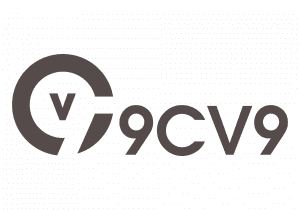









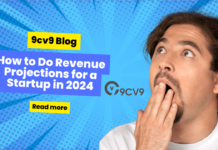




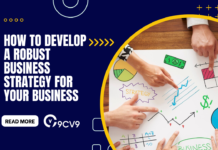
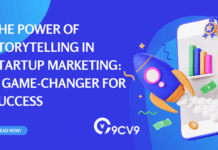
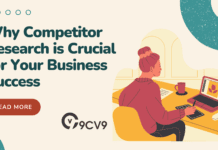
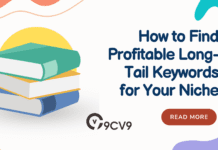



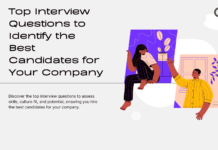
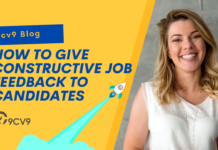
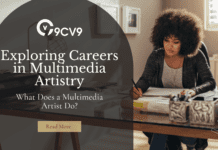
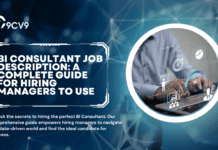





![Writing A Good CV [6 Tips To Improve Your CV] 6 Tips To Improve Your CV](https://blog.9cv9.com/wp-content/uploads/2020/06/2020-06-02-2-100x70.png)


